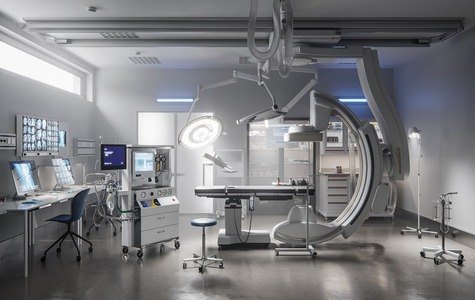- Medical Devices
- Thursday, 01 Jun 2023
US Helicobacter Pylori Non-Invasive Testing Market is expected to reach US$ 302.79 million by 2028
According to our new research study on “US H. pylori Non-Invasive Testing Market Forecast to 2028 – COVID-19 Impact and Country Analysis – by Test Type, Test Methods, and End User,” the market is expected to grow from US$ 223.76 million in 2022 to US$ 302.79 million by 2028; it is estimated to record a CAGR 5.3% during 2023–2028.
Factors like the increasing prevalence of H. pylori bacterial infection, rising market development activities in H. pylori non-invasive testing are boosting the market over the years are driving the US H. pylori non-invasive testing market growth.
Helicobacter Pylori (H. pylori) is a very motile, spiral, or curved rod-shaped gram-negative bacteria comprising multiple flagella that live in the gastric mucous-coated lining and the gastric pits of the epithelial tissue of the stomach and/or duodenum. Currently, non-invasive tests are the first methods for diagnosing H. pylori infection. For example, serological tests, stool antigen research, and urea breath test are widely used.
Technological Advancement and Innovations in US H. pylori Non-Invasive Testing Market
Accurate diagnosis of H. pylori infection is essential in clinical practice and research. Given the recent technological advancements in molecular biology, novel methods for diagnosing infections and antimicrobial resistance are now available which do not require invasive testing. The availability of advanced and new non-invasive tests such as real-time polymerase chain reaction (PCR) and chemiluminescence immunoassay (CLIA) is anticipated to trend the H. pylori non-invasive testing market. PCR-based H. pylori detections have several advantages, such as they can detect H. pylori infection and antimicrobial resistance simultaneously in a short time. Similarly, as with both ELISA and the best-performing lateral flow immunoassays, the CLIA technique has proven beneficial in identifying H. pylori in feces.
According to an article published in MDPI, in 2022, a study was conducted to evaluate the accuracy of the LIAISON Meridian H. pylori SA test, a fully automated solution for H. pylori stool antigen detection and confirmation of eradication of H. pylori infection. It uses monoclonal antibodies to detect the presence of H. pylori antigen in human stools in a fully automated, timesaving, and traceable CLIA. The LIAISON Meridian H. pylori SA test has an overall sensitivity of 67% and a specificity of 97%. Thus, it was concluded that the LIAISON H. pylori SA chemiluminescent diagnostic assay show a good accuracy for diagnosis of H. pylori infection, both pre- and post-treatment
The accuracy and sensitivity of these approaches have increased the demand for non-invasive techniques of H. pylori testing, further thriving the US H. pylori non-invasive testing market.
COVID-19 Pandemic Impact the US H. pylori Non-Invasive Testing Market Growth
As the number of coronavirus cases climbs in the US, many aspects of quarantine are becoming semi-permanent, at the very least. The prolonged shut-in situation is devastating news for countless industries impacted by business closures, but there are bright spots for sectors that have thrived amid the global health crisis so far. The first wave of the pandemic extensively influenced the H. pylori non-invasive testing market since the utilization of H. pylori non-invasive testing was decreased in clinics due to the lockdown. Additionally, as preventive measure people avoid the hospitals and clinic visits in the country and preferred telemedicine services to receive treatment. Moreover, during pandemic the demand for home-based test kits have increased significantly which provide the test and results without visiting any laboratory or hospitals. Hence, the market has experienced the slight decline in the growth during pandemic due to the limited production of test kits and limited testing in hospitals and clinics which has impacted the overall US H. pylori non-invasive testing market growth.
US H. pylori Non-Invasive Testing Market: Competitive Landscape and Key Developments
Bioneer Corp, Meridian Bioscience Inc, Abbott Laboratories, Thermo Fisher Scientific Inc, Bio-Rad Laboratories Inc, Coris Bioconcept SPRL, DiaSorin SpA, Sekisui Diagnostics LLC, CerTest Biotec SL, and QuidelOrtho Corporation, and among others are among the major players in the US H. pylori non-invasive testing market. Leading players adopt strategies such as the launch of new products, expansion and diversification of their market presence, and expansion of new customer base for tapping prevailing business opportunities.
The report segments the US H. pylori Non-Invasive testing market as follows:
The US H. pylori non-invasive testing market is segmented on the basis of test type, test method, and end user. Based on the type, the market is segmented into urea breath, stool antigen, and serology. Based on test method, the US H. pylori Non-Invasive Testing market is bifurcated into laboratories based and point of care. By end user, the US H. pylori non-invasive testing market is segmented into hospitals, reference laboratories, and others.
Contact Us
Contact Us: The Insight Partners
Phone: +1-646-491-9876
Email Id: sales@theinsightpartners.com
Related Industry Updates
North America Software as a Medical Device Market to Witness an Outstanding Growth During 2020 With Top Key Players are Velentium LLC,Tietronix Software, Inc.,S3 Connected Health,Zühlke Group,Science Group,Inzentiz,Cambridge Consultants Inc,BrightInsight, Inc.,CompliancePath,Jabil Inc.,Phillips-Medisize,Pro4People Sp. Z.o.o
Oct 22, 2020
Cardiac Monitoring Devices Market to Exhibit Steadfast Expansion by 2027
Jan 05, 2021
Light Therapy Market is expected to reach US$ 1,434.25 million by 2030
Jan 04, 2024
Biomaterials Market 2028 Global Forecasts and Key Regions Analysis
Apr 12, 2023
Neokidney and Debiotech Join Forces in NextKidney SA and Appoint Jérôme Augustin CEO of the New Company
Jun 16, 2020
Ophthalmic Viscosurgical Devices Market Analysis by Size, Share, Growth, Trends up to 2027
Apr 15, 2021
Brain Biomarkers Market: Emerging Technologies and Innovations
Mar 22, 2023
